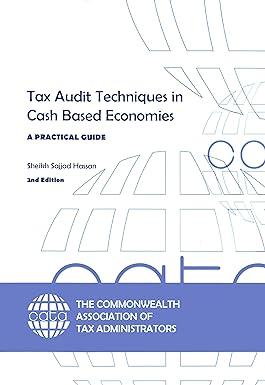Question
During the period 2003 to 2008, Satyam Computer Services Limited, an information technology services company based in Hyderabad, India, that serviced more than a third
During the period 2003 to 2008, Satyam Computer Services Limited, an information technology services company based in Hyderabad, India, that serviced more than a third of the Fortune 500 companies, roiled Indian stock markets when it announced it deceived investors by engaging in a massive fraud. Company chairman Ramalinga Raju resigned after announcing that 50.4 billion rupees ($1.04 billion) of the 53.6 billion rupees the company listed as assets in its financial statements for the second quarter ending in September 2008 did not exist.
During the period of the fraud, senior management manufactured over 6,000 fictitious invoices representing over $1 billion in revenue for services that were never provided, in some cases for customers that did not exist. Management also created false bank statements to reflect payments on the false invoices and support the fictitious cash balances. Satyam provided certain employees with an administrative super user login identification and password that allowed them to access the invoice management system to record the false invoices. This process allowed those invoices to be included in revenue, but concealed their existence from the heads of Satyams business units, who would recognize that the services had not been provided.
Satyams auditors sent confirmations to verify the existence of the bank balances. However, they did not maintain control over the confirmations as required by auditing standards. The audit engagement team relied on Satyam management to mail out the confirmation requests to the banks, and to return the confirmation responses to the engagement team, instead of directly contacting the banks as required by auditing standards.
Raju admitted that he intentionally maintained the inflated revenues and profits because public knowledge of the companys poor performance would likely lead to a takeover of the company, thereby exposing the fraud. Raju indicated, It was like riding a tiger, not knowing how to get off without being eaten. On January 7, 2009, the New York Stock Exchange suspended trading of the companys American Depository Shares (ADS). When trading resumed on January 12, 2009, Satyams ADS price declined nearly 85 percent to close at $1.46. The Government of India assumed control of the company by dissolving Satyams Board of Directors and then selected a strategic investor to run the company.
discuss what auditors did wrong in the engagement with Satyam?
Step by Step Solution
There are 3 Steps involved in it
Step: 1

Get Instant Access to Expert-Tailored Solutions
See step-by-step solutions with expert insights and AI powered tools for academic success
Step: 2

Step: 3

Ace Your Homework with AI
Get the answers you need in no time with our AI-driven, step-by-step assistance
Get Started


